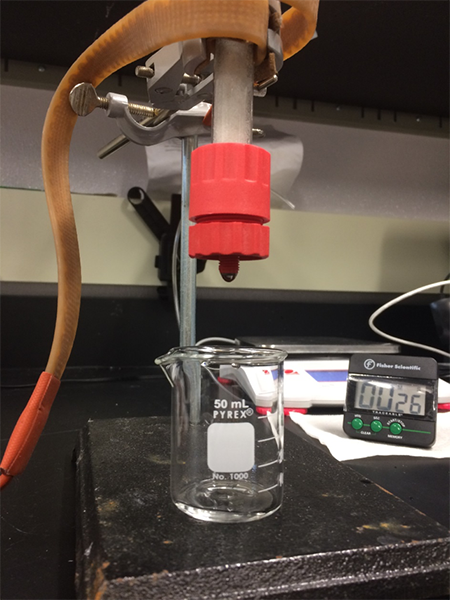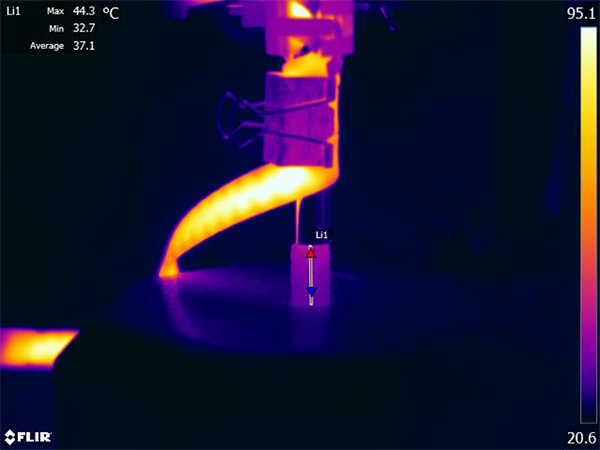Home » Discovery Grants » Innovative Water Collection Project Could Help Create More Drinking Water in Developing Countries
Innovative Water Collection Project Could Help Create More Drinking Water in Developing Countries
Posted by anderc8 on Thursday, June 22, 2017 in Discovery Grants, News.

Shihong Lin, Assistant Professor of Civil and Environmental Engineering
Written by Shihong Lin, Assistant Professor of Civil and Environmental Engineering
“Water, water, everywhere, nor any drop to drink.” This line by a 19th century English poet vividly describes the paradox in water scarcity that many regions of our world still face. However, thanks to advances over the past few decades, we now have powerful technological means to make potable water out of saline water, wastewater and even contaminated water. There are still many developing areas of the world where water quality is compromised or where extensive treatment implementation is simply economically prohibitive.
“Water, water, everywhere, you might not see it, but it permeates the air.” If you ever see the dew droplets on the grass or tree leaves on a chilly early morning, you might wonder where the water comes from. These tiny water droplets form when moisture in the air condenses on surfaces that become colder than the air due to the rapid heat loss via radiation. Simple man-made collectors using plastic films as the condensation surface have been developed for dew collection, but their efficiency can be further improved.

Water dripping from a column, which is packed with PNIPAM-coated glass beads and saturated with water. The upper part of the column is heated to drive the water propagation.
In a project sponsored by the Vanderbilt University Discovery Grant program, my team of investigators and I are taking a different approach by integrating smart materials and system design. We coat a porous matrix (like a sponge) with a thermally-responsive polymer, Poly (N-isopropylacrylamide) or PNIPAM. This polymer is hydrophilic (i.e. attracting water) at relatively low temperatures and hydrophobic (i.e. water repellent) at moderate temperatures. In the chilly dawn, this device will efficiently collect water from the humid air and store it within the hydrophilic sponge. When the sun comes up, the solar radiation provides the heat to increase the temperature of the sponge so that it becomes hydrophobic and thus no longer comfortable for the water to stay in, allowing us to collect the water driven out of the sponge. We have conducted some preliminary experiments and proved that the system can expel water when heated. Our next step is to improve the material fabrication process and test the system for a complete cycle of water absorption-desorption.
Several biological systems are known for their ingenious structure for effective harvesting of atmospheric water in the forms of dew or fog. Prominent examples include Namibia dessert beetle forewings with heterogeneous wettability, spiders web fibers with transformable structure stimulated by water contact, and many dessert living plants, such as Foothill palo verde and cacti, that have three-dimensional structure to maximize their contact with moisture. Inspired by these natural surfaces, recent research has been actively exploring biomimetic material design that can enhance the efficiency of dew condensation and collection.

An infrared photo of a top-heated aluminum sponge coated with PNIPAM. A temperature gradient from 44.3 °C (top) to 32.7 °C (bottom) can be observed.
Beyond the intended purpose of atmospheric water collection, the system we are developing can also be used to answer fundamental scientific questions. For example, the sponge can be heat up by the increasing ambient temperature (assuming it becomes warm enough) or by using a solar thermal collector. Does it matter in which way it gets warmed up? Our hypothesized answer to this question is yes. We speculate that if the heating occurs homogeneously, water in the center of the sponge will be “confused” regarding which way to exist, as the surrounding environment becomes equally hydrophobic. In this case, much of the water might get trapped within the sponge even it does not feel comfortable. When the heat is provided locally on the sponge, a temperature gradient may build up and propagate along the sponge. The region closer to the heat source will warm up faster and become hydrophobic, potentially pushing the water toward the cooler and hydrophilic region until the hydrophilic region becomes saturated. This process may effectively “squeeze” the water out of the sponge, until the entire sponge becomes warm and hydrophobic. We are interested in how water behaves in these environments with temporally varying wetting property and will test the above hypothesis in our project.
I invite you to join the conversation by leaving comments or questions in the space provided below. Please return to the blog site regularly for subsequent blog entries related to our research.
